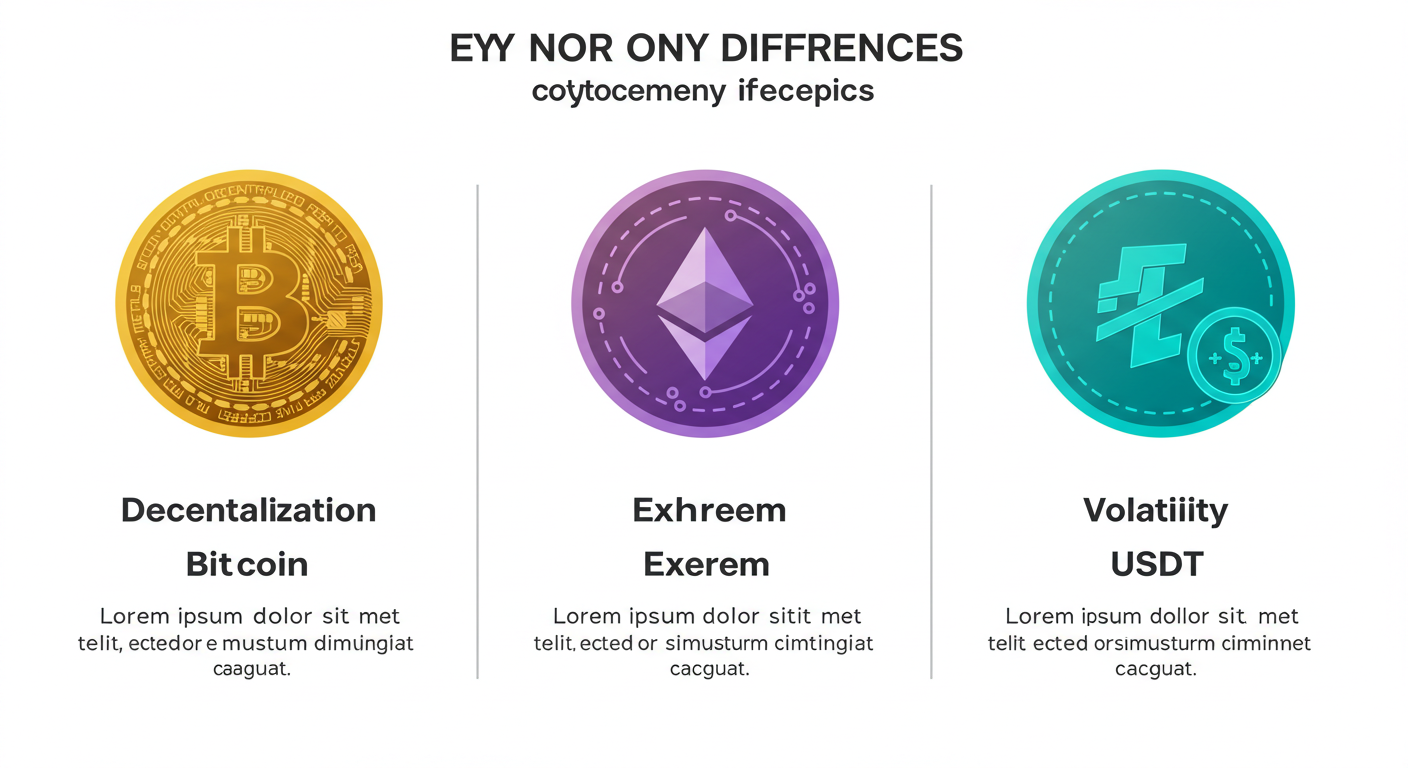
The Difference Between Bitcoin, Ethereum, and USDT
- Posted on: May 25, 2025
Introduction
If you’re new to the world of cryptocurrency, the number of coins and tokens out there can feel overwhelming. Among the thousands available, three names always stand out: Bitcoin (BTC), Ethereum (ETH), and Tether (USDT). These digital assets dominate the crypto market — but they each serve very different purposes. In this post, we’ll break down what makes them unique and help you understand how they fit into the world of digital finance.
1. Bitcoin (BTC): The First and Most Valuable
Purpose: Digital alternative to money
Launched: 2009
Created by: Satoshi Nakamoto (pseudonym)
Category: Cryptocurrency (Store of Value)
Bitcoin is the first and most popular cryptocurrency in the world. It was created as a decentralized digital currency that allows people to send and receive money over the internet without needing a bank or middleman.
Key Features:
- Fixed supply of 21 million BTC
- Often referred to as “digital gold”
- Used mostly for storing value and long-term investment
- Runs on its own blockchain with a Proof-of-Work (PoW) consensus
Use Case: Investors buy Bitcoin as a hedge against inflation, and it's often used for peer-to-peer payments and savings.
2. Ethereum (ETH): The Smart Contract Pioneer
Purpose: Decentralized application platform
Launched: 2015
Created by: Vitalik Buterin and others
Category: Cryptocurrency + Platform
While Bitcoin focuses on digital money, Ethereum goes beyond that. It allows developers to build decentralized applications (dApps) and smart contracts — programs that run automatically when certain conditions are met.
Key Features:
- More flexible than Bitcoin
- Hosts thousands of tokens (like NFTs and DeFi apps)
- Switched from Proof-of-Work to Proof-of-Stake (PoS) in 2022 for better energy efficiency
- ETH is used to pay for transactions and smart contract execution (gas fees)
Use Case: Ethereum is like a global computer where people build apps for finance (DeFi), gaming, identity, and more.
3. Tether (USDT): The Stablecoin of Crypto
Purpose: Price stability in crypto markets
Launched: 2014
Created by: Tether Limited
Category: Stablecoin
USDT (Tether) is not like Bitcoin or Ethereum. It’s a stablecoin, which means its value is pegged to a real-world asset — usually the US dollar. 1 USDT is always designed to equal 1 USD.
Key Features:
- Price remains stable (not volatile like BTC or ETH)
- Backed by reserves (cash, bonds, or other assets)
- Exists on multiple blockchains (Ethereum, Tron, BSC, etc.)
- Commonly used for trading, transferring value, and avoiding crypto market volatility
Use Case: Traders use USDT to move funds between exchanges, store profits without converting to fiat, and pay for services within the crypto space.
Summary Table
| Feature | Bitcoin (BTC) | Ethereum (ETH) | Tether (USDT) |
| Type | Cryptocurrency | Smart contract platform | Stablecoin |
| Use Case | Store of value, payments | DApps, DeFi, NFTs | Stable trading, hedging |
| Supply Limit | 21 million | No fixed limit | Pegged to USD (1:1) |
| Volatility | High | High | Low |
| Blockchain | Bitcoin blockchain | Ethereum blockchain | Multiple (e.g. Tron, ETH) |
| Consensus Mechanism | Proof-of-Work | Proof-of-Stake (since 2022) | Not applicable |
Bitcoin, Ethereum, and USDT all play vital roles in the crypto ecosystem. Bitcoin acts as a digital store of value, Ethereum powers a decentralized application economy, and USDT provides stability for trading and transactions. Understanding their differences helps you make smarter decisions whether you're trading, investing, or building in the crypto space.
At EootleX, we support all three assets — BTC, ETH, and USDT — allowing our users to buy, sell, and convert crypto seamlessly. Join us today and take your first step into the future of finance!
